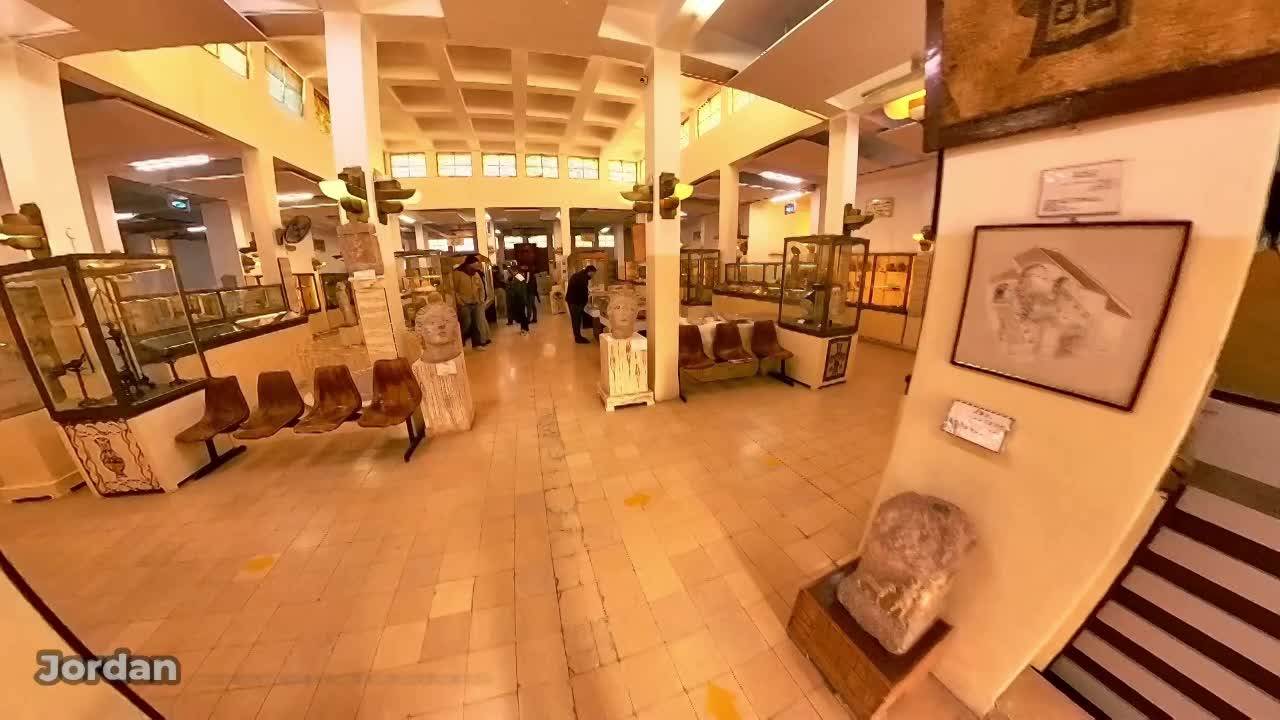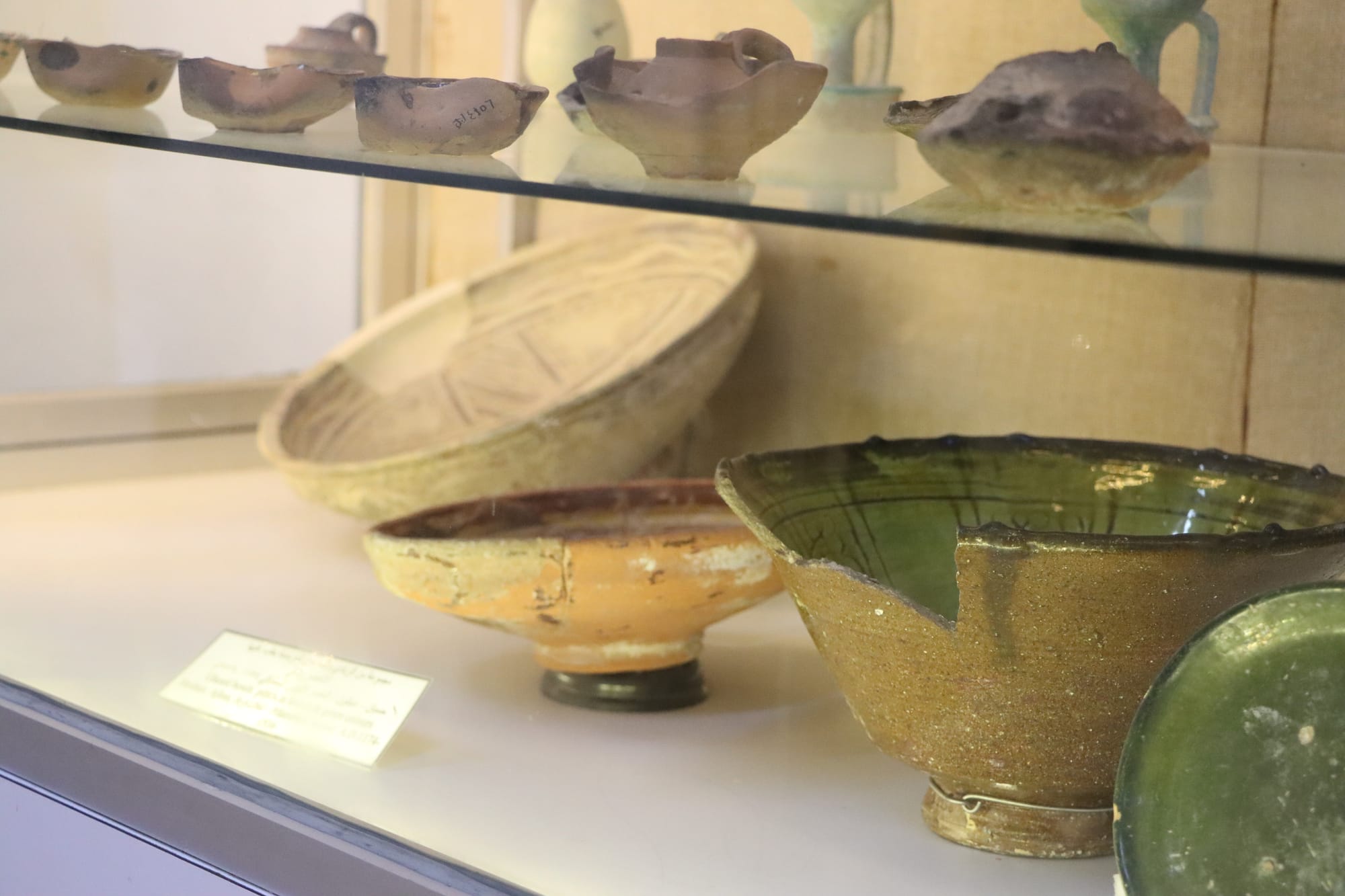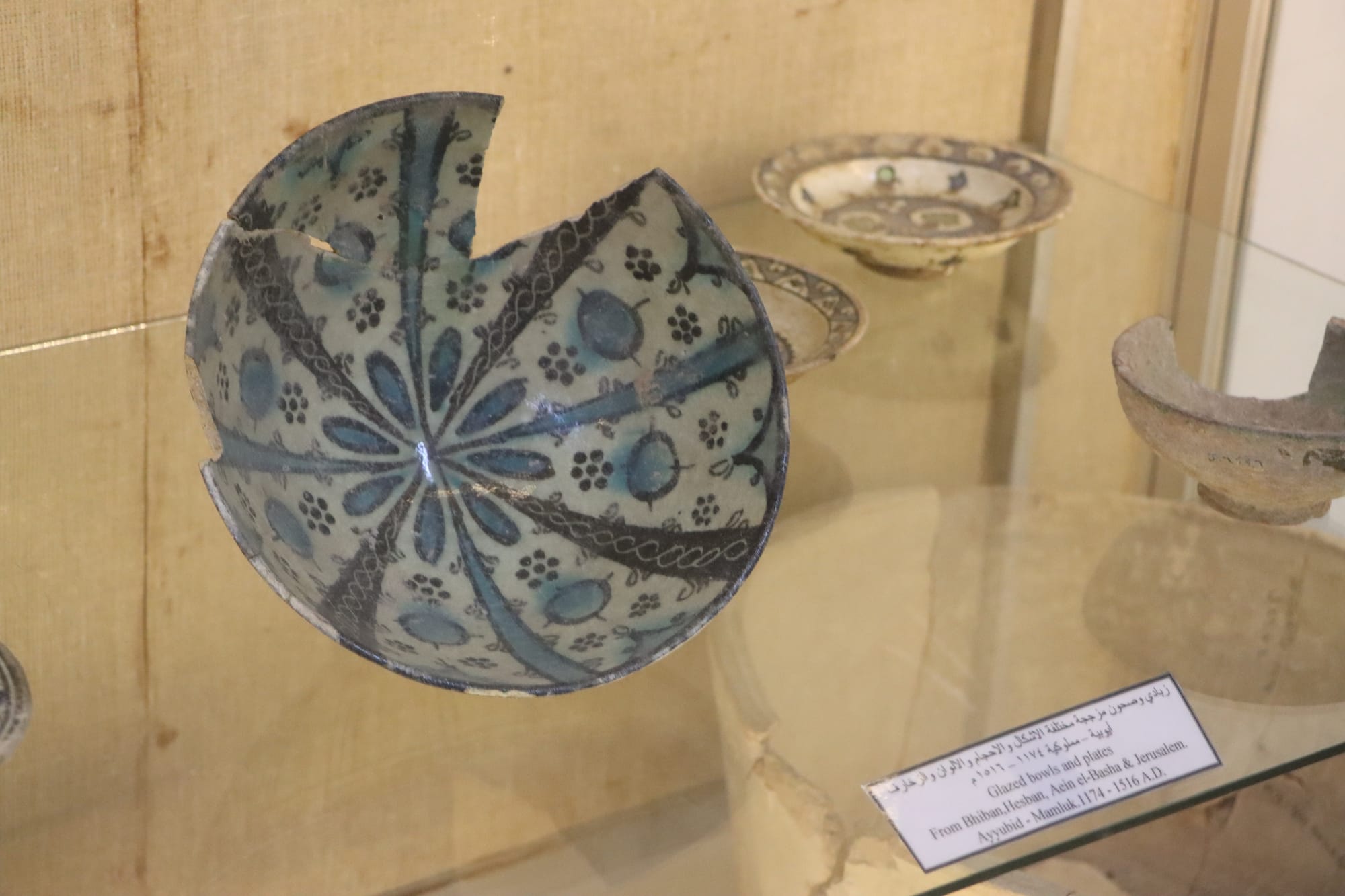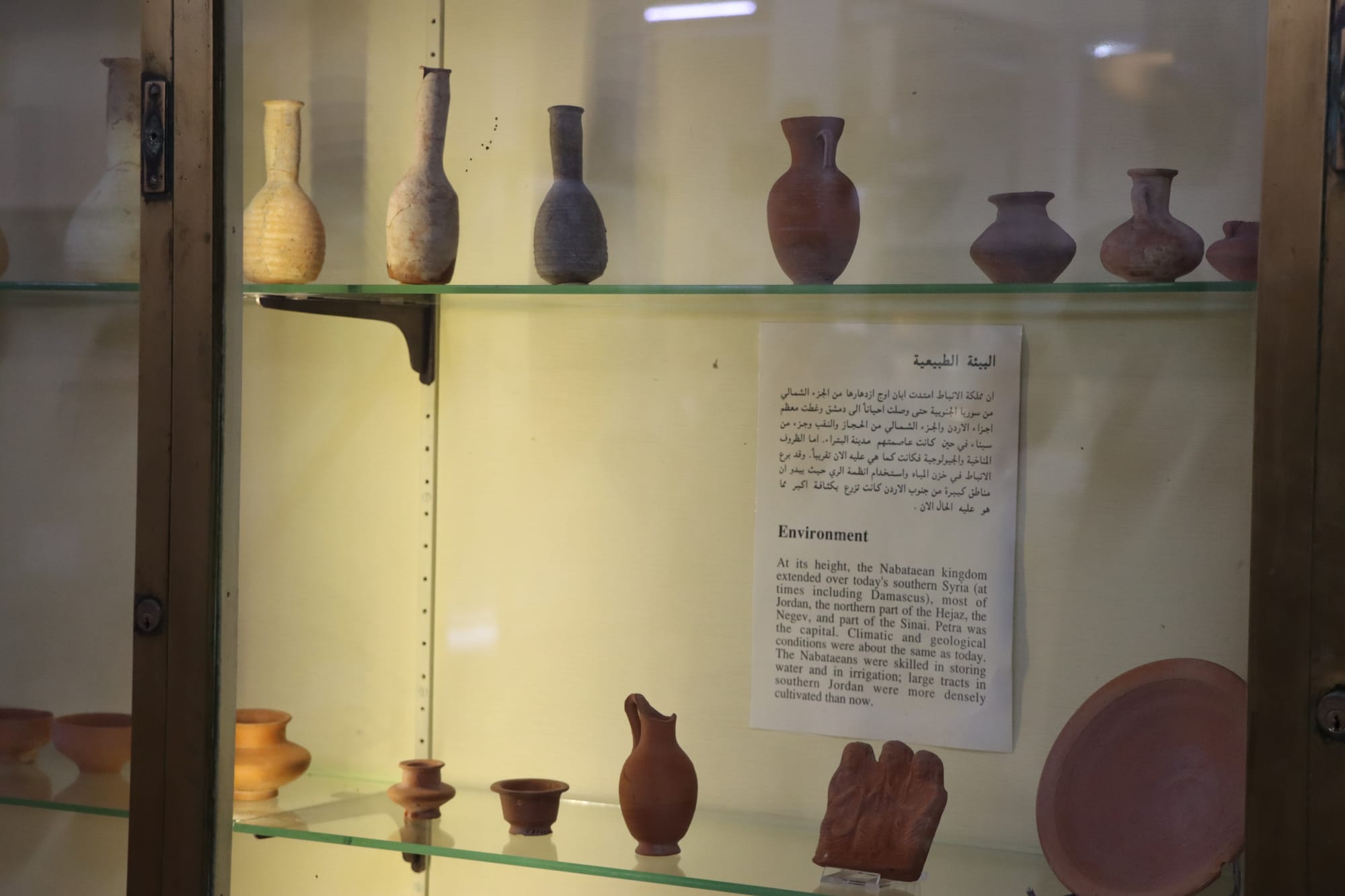ARCHAEOLOGICAL MUSEUM
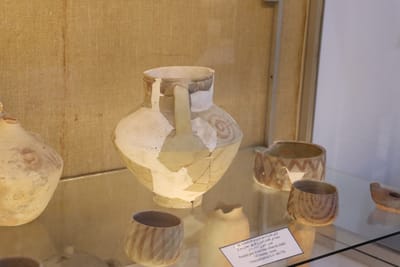
The museum courtyard overlooking the Temple of Hercules includes a number of archaeological stone pieces, the most important of which are two marble pieces believed to belong to a huge statue of Hercules. In addition to a number of sculptures, architectural ornaments and basalt sarcophagi.
The museum adopts the method of presentation according to the historical sequence, which conveys the visitor with a smooth chronological order and sequence between the ages to identify the cultural production of the human being who lived on the land of Jordan through all time periods. From prehistoric times to the Ottoman period, passing through the Stone, Bronze, Iron, Hellenistic, Roman, Byzantine and Islamic eras.
The museum acquires about twenty thousand antiquities, including pottery, glass, tray tools, inscriptions, metal utensils and gold ornaments, in addition to marble, stone and stucco statues, and more than 36,500 gold, silver and bronze coins.
The museum is distinguished by its acquisition of rare artifacts that are unparalleled anywhere in the world, the most important of which are:
Ain Ghazal plaster statues, which date back to the pre-pottery Neolithic period (about 6500 BC), which were discovered by chance in 1985 during the construction of a road in the Ain Ghazal area.
Click For Directions
